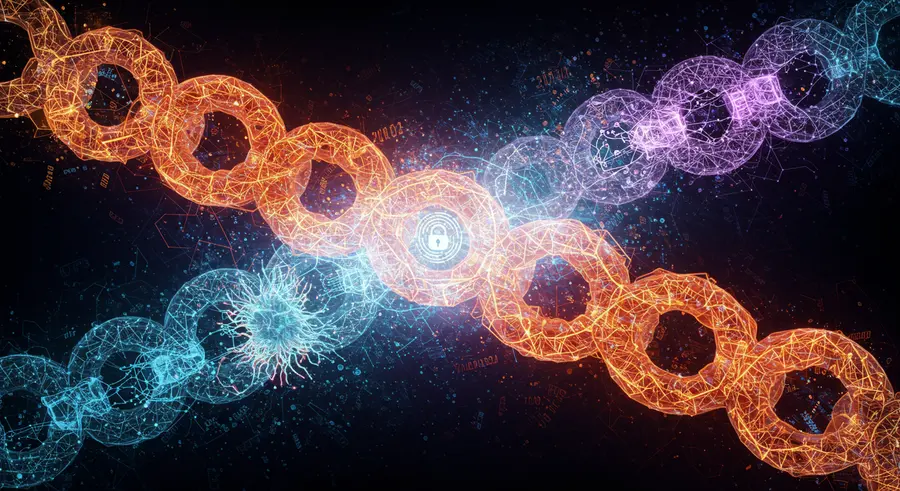Decentralized Identity: A Cornerstone of Passwordless Authentication
Discover how Decentralized Identity (DID) and Self-Sovereign Identity (SSI) are revolutionizing digital authentication, empowering individuals with unprecedented control over their personal data and enabling truly passwordless experiences.

What is Decentralized Identity (DID)?
Decentralized Identity (DID) is a novel approach to digital identity that puts individuals in control of their own identifiers and data. Unlike traditional centralized systems where a single entity (like a social media company or a government) holds and manages your identity information, DIDs leverage blockchain and distributed ledger technologies to create a secure, tamper-proof, and privacy-preserving framework for identity management.
At its core, DID allows users to generate unique, cryptographic identifiers that are not tied to any central authority. These identifiers can then be used to prove aspects of their identity (e.g., age, qualifications, employment) using "verifiable credentials" issued by trusted organizations, without revealing unnecessary personal data. This concept is closely related to Self-Sovereign Identity (SSI), which emphasizes user control, consent, and privacy.
The Intersection with Passwordless Authentication
The synergy between decentralized identity and passwordless authentication is profound. In a DID framework, an individual's digital identity isn't a username and password stored on a company's server, but a set of verifiable credentials they own and control. This fundamentally changes the authentication paradigm:
- Enhanced Security: By eliminating centralized identity stores, DIDs drastically reduce the attack surface for large-scale data breaches that compromise passwords. Authentication relies on cryptographic proofs of ownership and verifiable credentials, making phishing and credential stuffing attacks far less effective.
- Improved User Experience: Users no longer need to remember multiple passwords. Instead, they can use their self-owned DID to authenticate across various services, often with a simple biometric scan or a confirmation on their device, streamlining the login process.
- Privacy by Design: DIDs enable "selective disclosure," meaning users can choose to share only the necessary information for a specific transaction or authentication, rather than exposing their entire digital profile. This minimizes data exposure and enhances privacy.
- Interoperability: Standardized DID methods and verifiable credentials promote interoperability across different platforms and services, fostering a more seamless and integrated digital ecosystem.
Key Components of a DID System
Understanding the building blocks of a decentralized identity system is crucial:
- Decentralized Identifiers (DIDs): These are globally unique identifiers that resolve to DID documents. They are persistent, resolvable, and cryptographically verifiable.
- DID Documents: These documents contain public keys, service endpoints, and other cryptographic material associated with a DID, enabling secure interactions and authentication.
- Verifiable Credentials (VCs): Digital attestations issued by an "issuer" (e.g., a university issuing a degree) to a "holder" (the individual). These VCs can be cryptographically proven to a "verifier" without requiring direct interaction with the issuer at the time of verification.
- DID Resolvers: Mechanisms used to retrieve a DID document from a DID.
- Wallets/Agents: Software applications (often on mobile devices) that store and manage DIDs, private keys, and verifiable credentials for the user.
Real-World Applications and Future Outlook
Decentralized Identity holds immense promise across various sectors:
- Digital Wallets: Securely storing and presenting digital IDs, vaccination records, or professional certifications.
- Online Services: Streamlined, privacy-preserving logins for websites and applications, moving beyond traditional passwords.
- Supply Chain Verification: Proving the authenticity and origin of products.
- Healthcare: Managing and sharing health records with consent.
- Financial Services: KYC/AML processes with enhanced privacy and efficiency.
As the digital landscape continues to evolve, decentralized identity is poised to become a fundamental layer for secure and user-centric interactions. It empowers individuals with true ownership of their digital selves, moving towards a future where identity is not just secure but also truly self-sovereign. The principles of DID align perfectly with the broader goals of passwordless authentication, making it a critical area of innovation.
For more in-depth technical details on DIDs, refer to the W3C Decentralized Identifiers (DIDs) v1.0 specification. You can also explore projects and initiatives by the Decentralized Identity Foundation (DIF) and learn about the role of Hyperledger Foundation in building open-source blockchain technologies that underpin many DID solutions.
Back to Home »